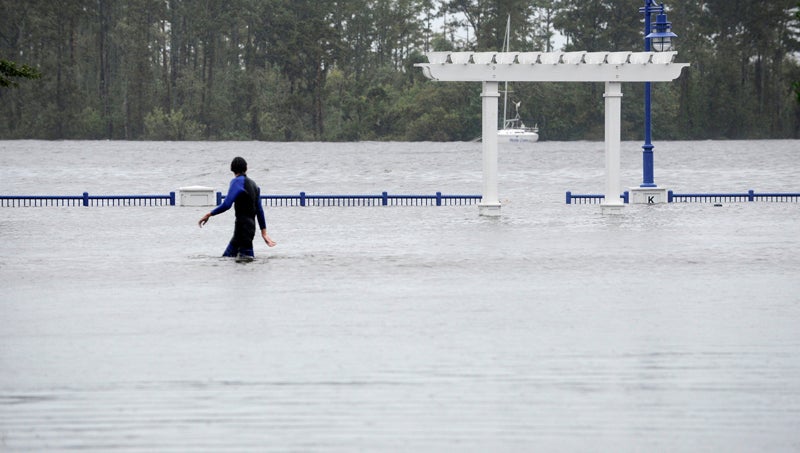One year later, long-term recovery from Florence still ongoing
Published 8:40 pm Friday, September 13, 2019

- BE PREPARED: Flooding is a serious problem that accompanies hurricanes that make landfall on the shores of the Pamlico River. Proactive preparedness is encouraged by the American Red Cross to prevent any increased risks to residents in Beaufort County. (Ashley Vansant/Daily News)
The following is the first article in a series discussing the one-year anniversary of Hurricane Florence.
On Sept. 13, 2018, the waters of the Pamlico and Pungo rivers began to rise, pushed in from the Pamlico Sound by the approaching winds of Hurricane Florence. Three days later, the waters receded to reveal devastation.
To frame that picture with numbers, more than 500 homes and 31 businesses were estimated to have been impacted by the storm, 12,000 people without power countywide, and 260 people had to be rescued from their homes by boat in Washington alone.
This Saturday marks exactly one year since Florence brought historic flooding to Beaufort County. Although the storm only lasted three days, its impacts still linger. From mucking out and repairing homes to navigating the sometimes-complicated world of state and federal funding, the process of recovery is ongoing and will likely continue for years to come.
Shortly after Florence, FEMA set up shop at the Bobby Andrews Recreation Center in Washington. There, homeowners and business owners were able to apply for assistance from the federal agency, as well as loans from the U.S. Small Business Administration.
While the funds secured there helped address immediate needs, the long-term goal is to strengthen residences and infrastructure against future disasters, according to Mid-East Commission Disaster Recovery Coordinator Lisa Williams, formerly of Beaufort County Emergency Services.
“Florence and Matthew, they were devastating storms,” Williams said. “But because of the impact they had, they have given many counties, including Beaufort County, the opportunity to tap into some disaster relief funds. Beaufort County is working to make sure that those opportunities aren’t missed.”
Transitioning to a new role with the Mid-East Commission, Williams continues to manage applications of 91 properties in Beaufort County for the federal Hazard Mitigation Grant Program funding. The program is designed to help elevate, buy out or otherwise fix issues with homes that have been repeatedly flooded. From application to actual work at the properties, however, can take up to 24 months, and are funded based on the flood risk for each property.
In addition to managing the HMGP grants, Williams is also working to help secure Flood Mitigation Assistance Grants for homeowners and Community Block Development Grants for Beaufort County to harden its infrastructure against future storms.
“The immediate recovery is behind us,” Williams said. “When you get to a year out, people are very resilient. They persevere. People in Beaufort County are some of the most resilient I have ever met. A year out, for the most part, they have created a new normal. But the long-term recovery part of it is what we can do for the next time.”
Because of long-term recovery efforts in the past, Williams says things have actually gotten better in terms of flooding, even if it’s hard to see from year to year.
“We have mitigated a lot of properties in this county. We have a lot of people, who by the time Florence came, did not flood because the long-term recovery part of it had elevated their property or relocated them to another area outside the flood zone. The loss, the risk, keeps becoming less and less. The ultimate goal is to get everyone mitigated so we don’t have people who are at risk of flooding. We’ve made great strides in that. It’s hard to see that progress has been made, (but) if you look back five years ago, you can see the progress that’s been made.”





